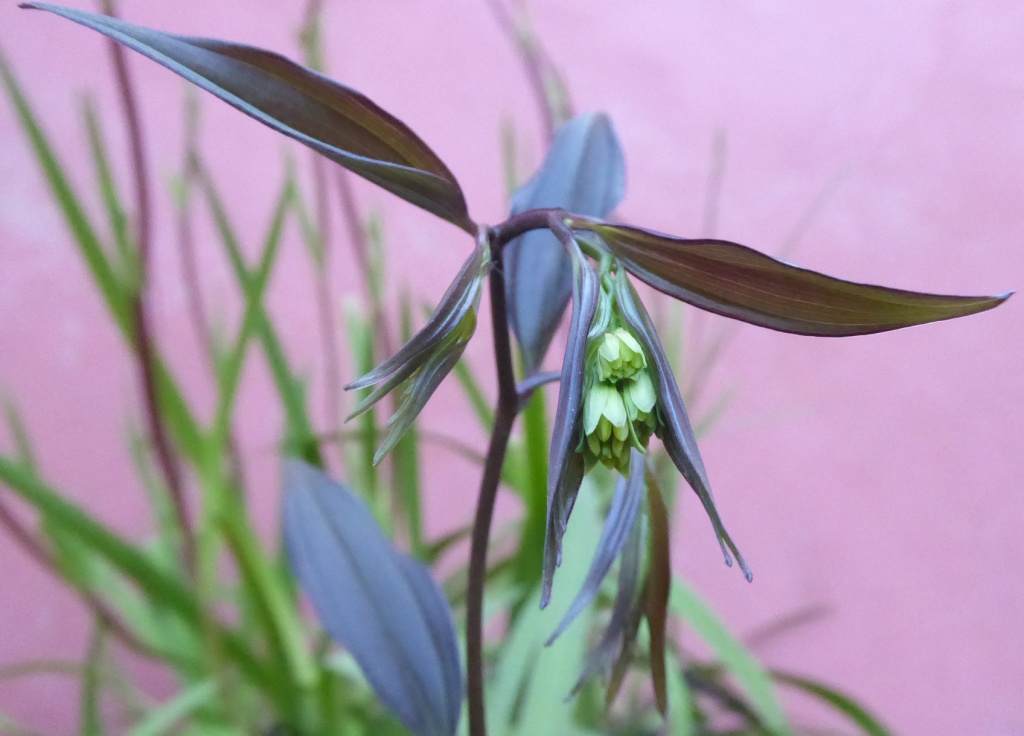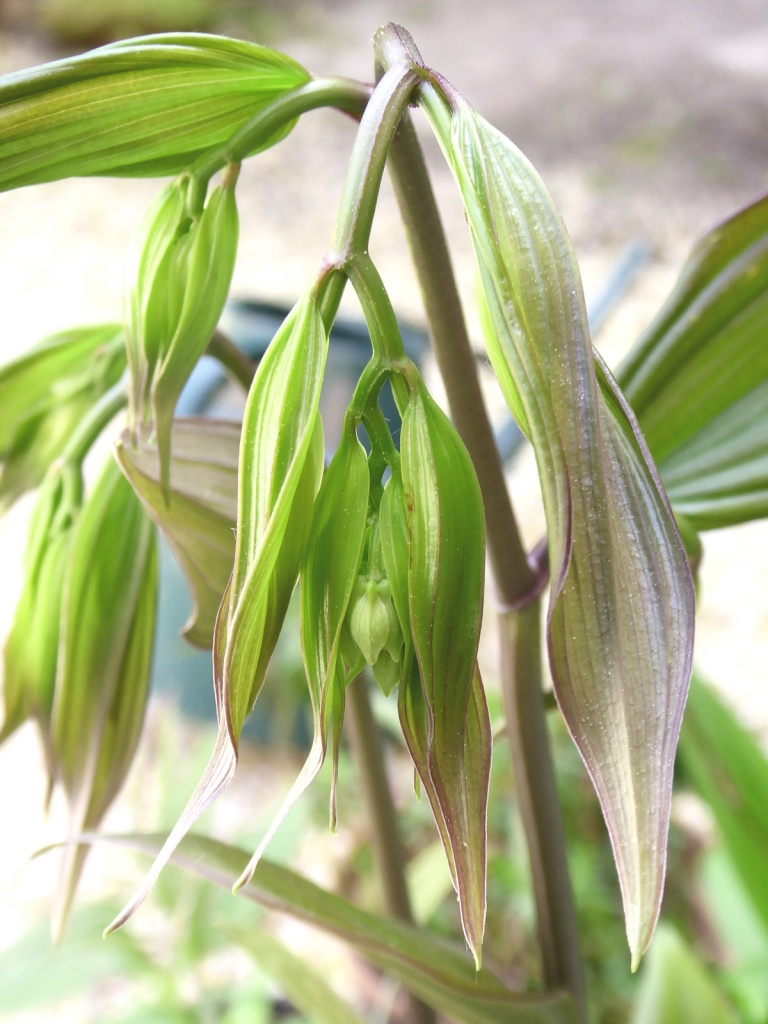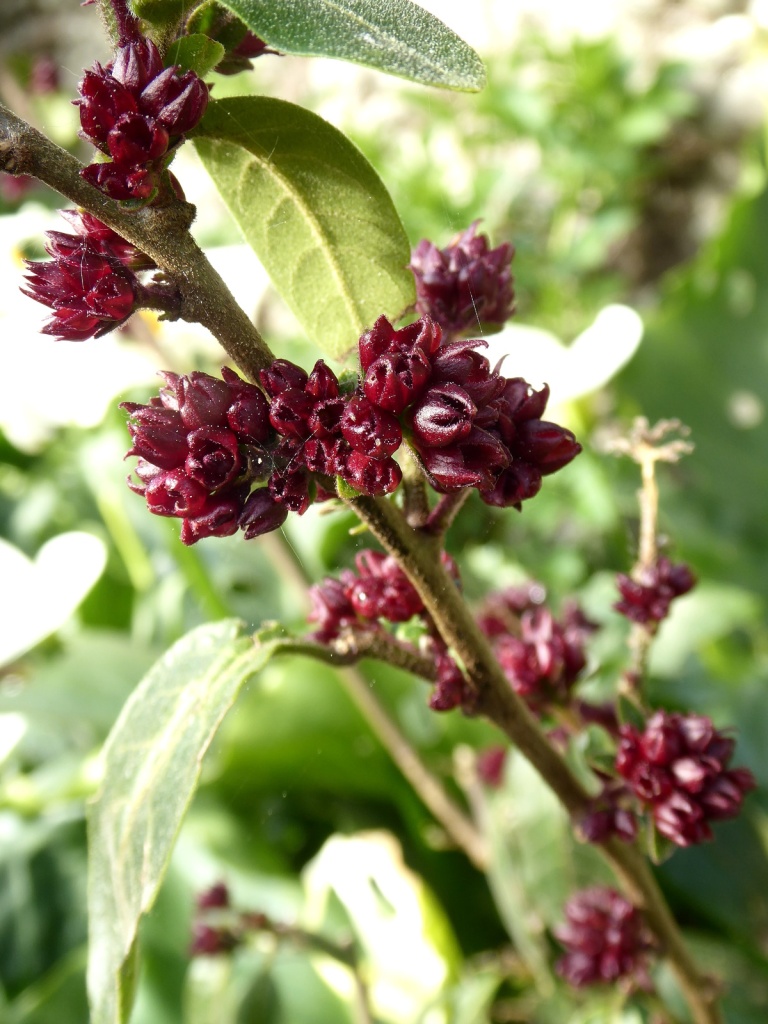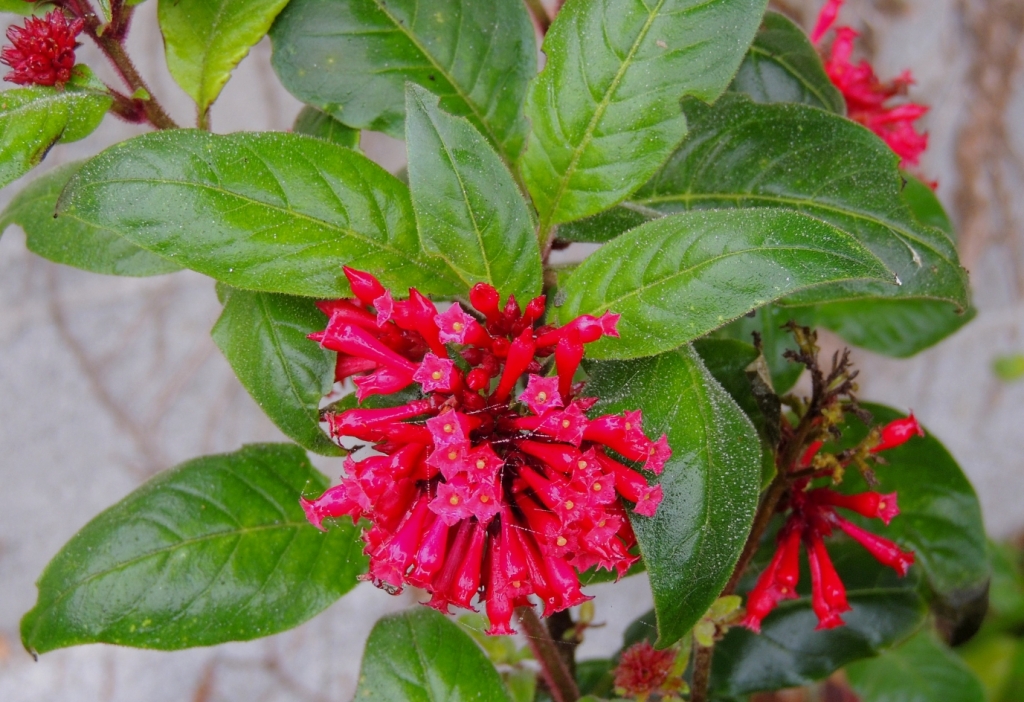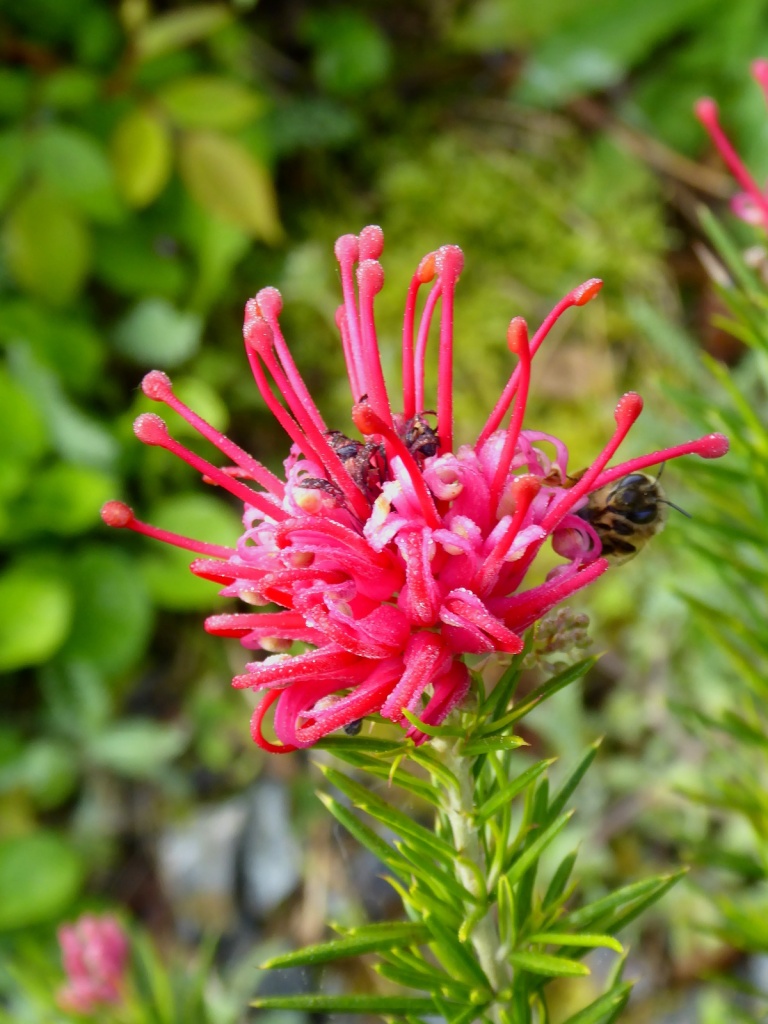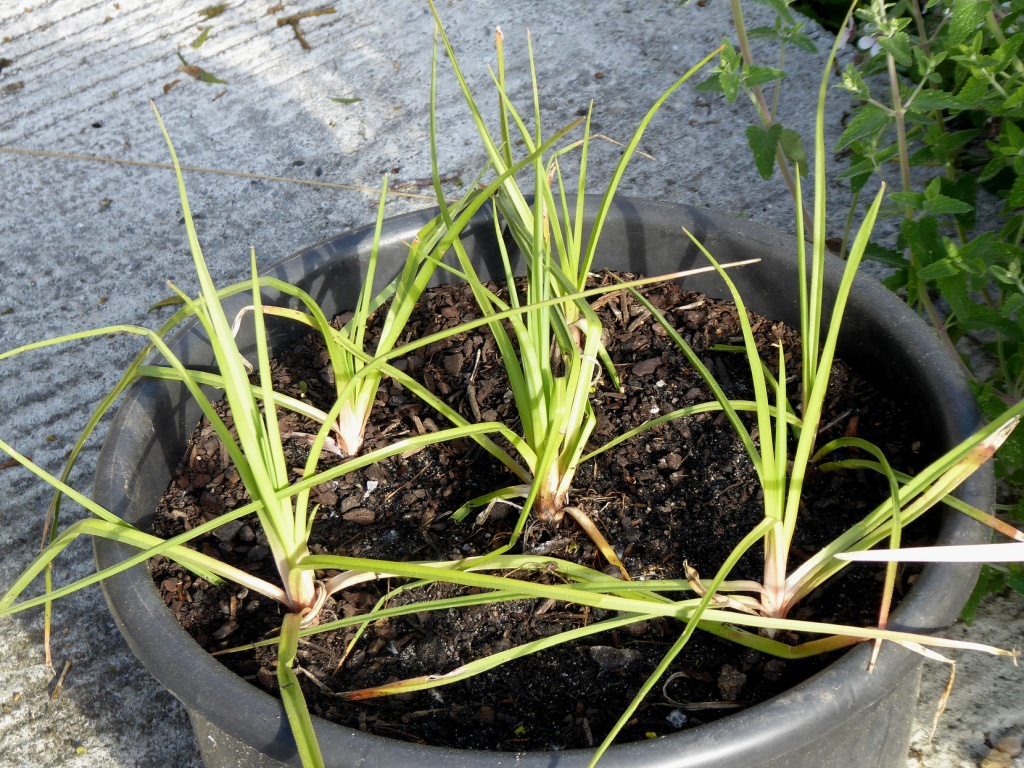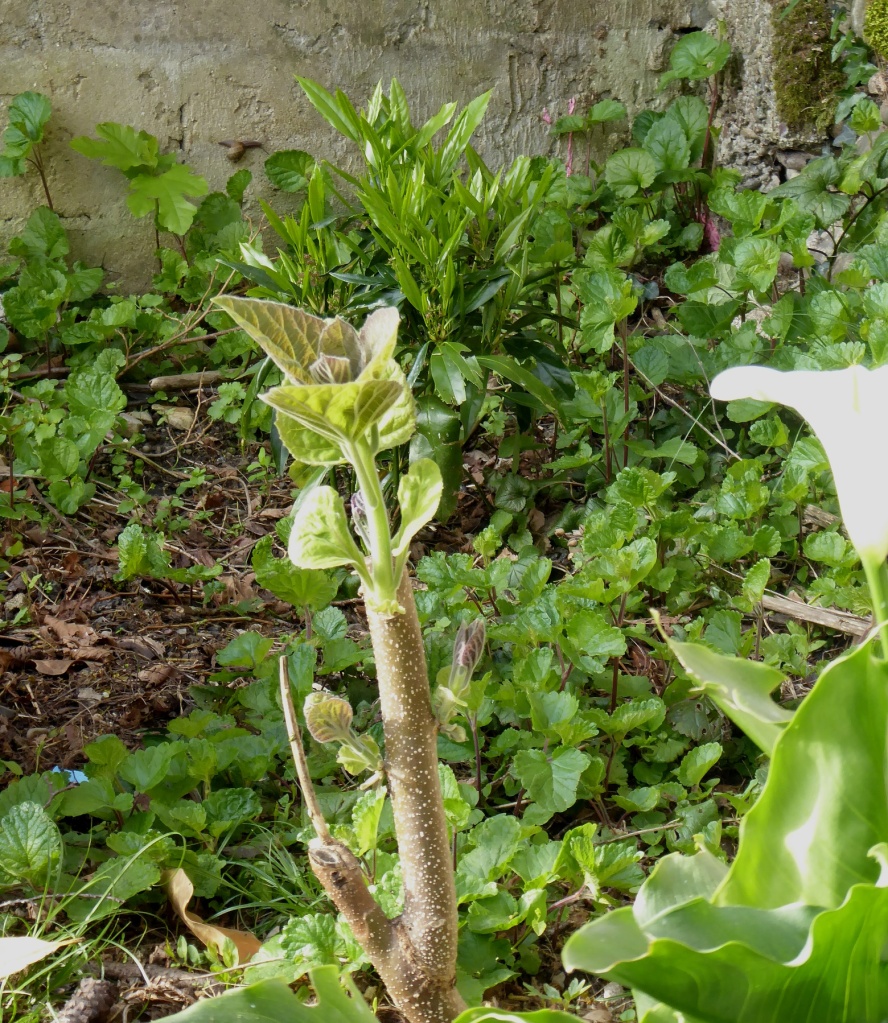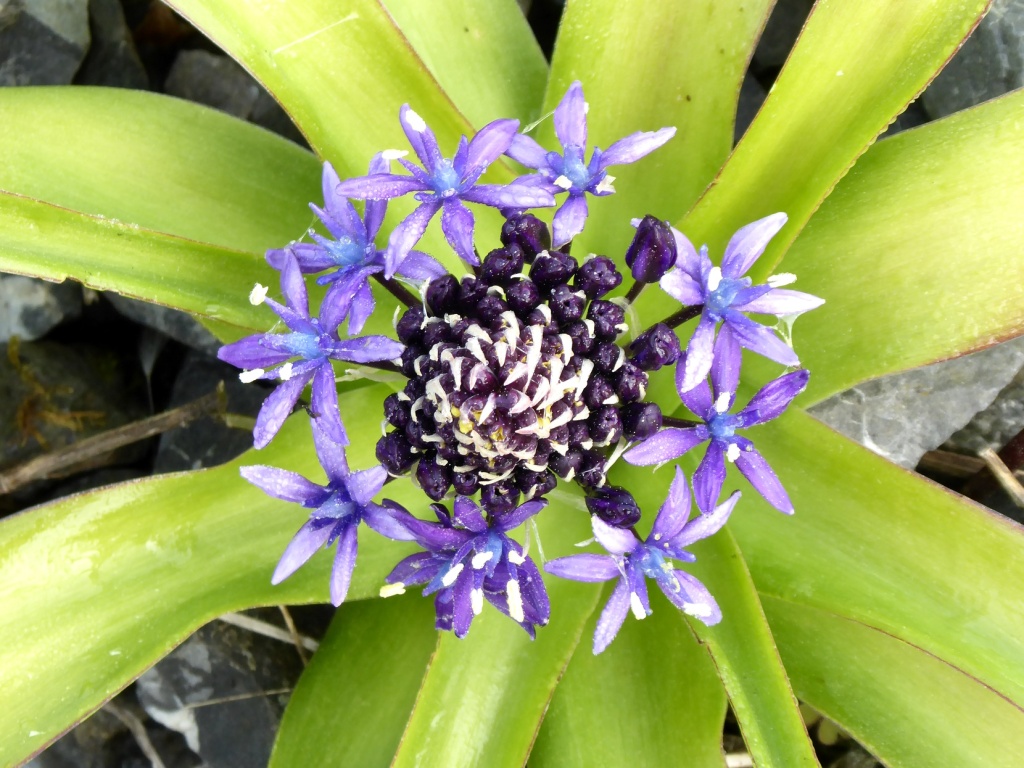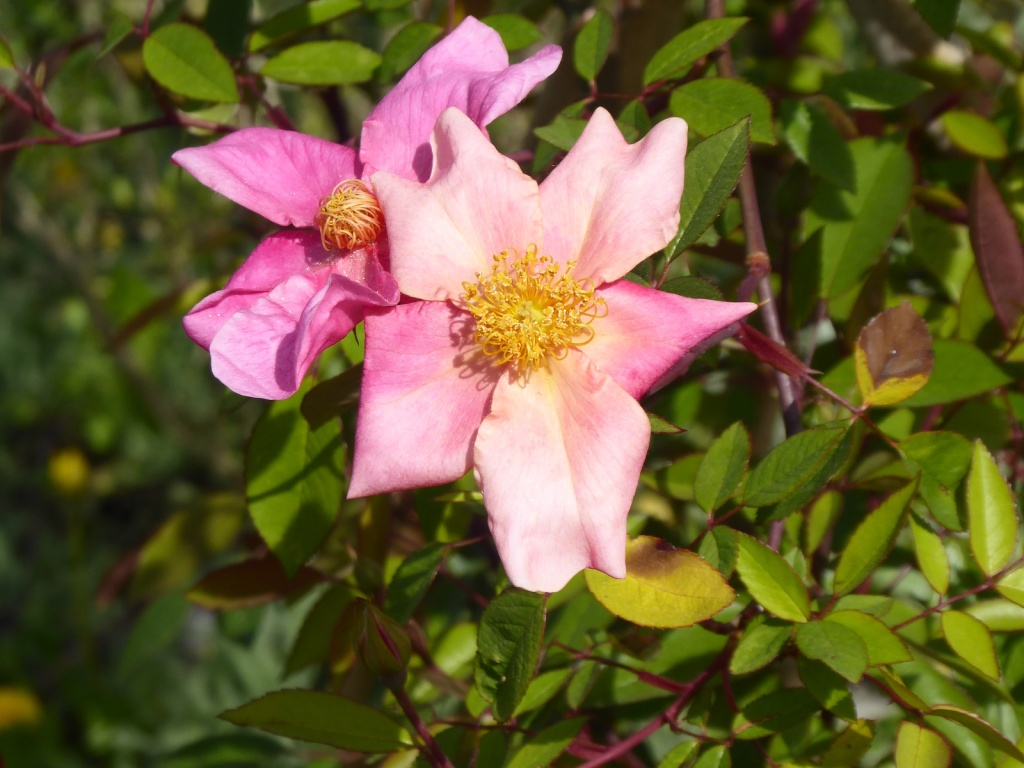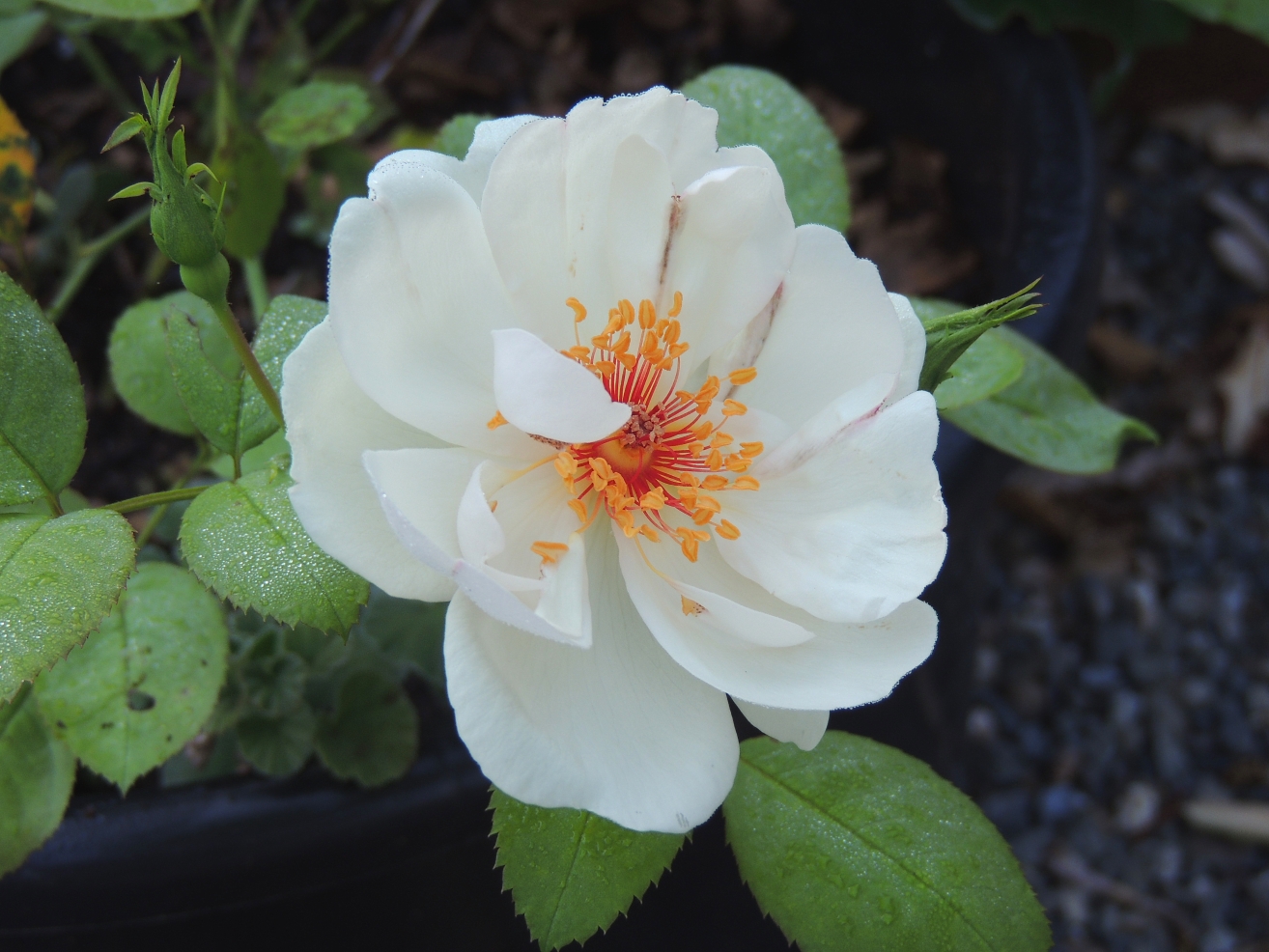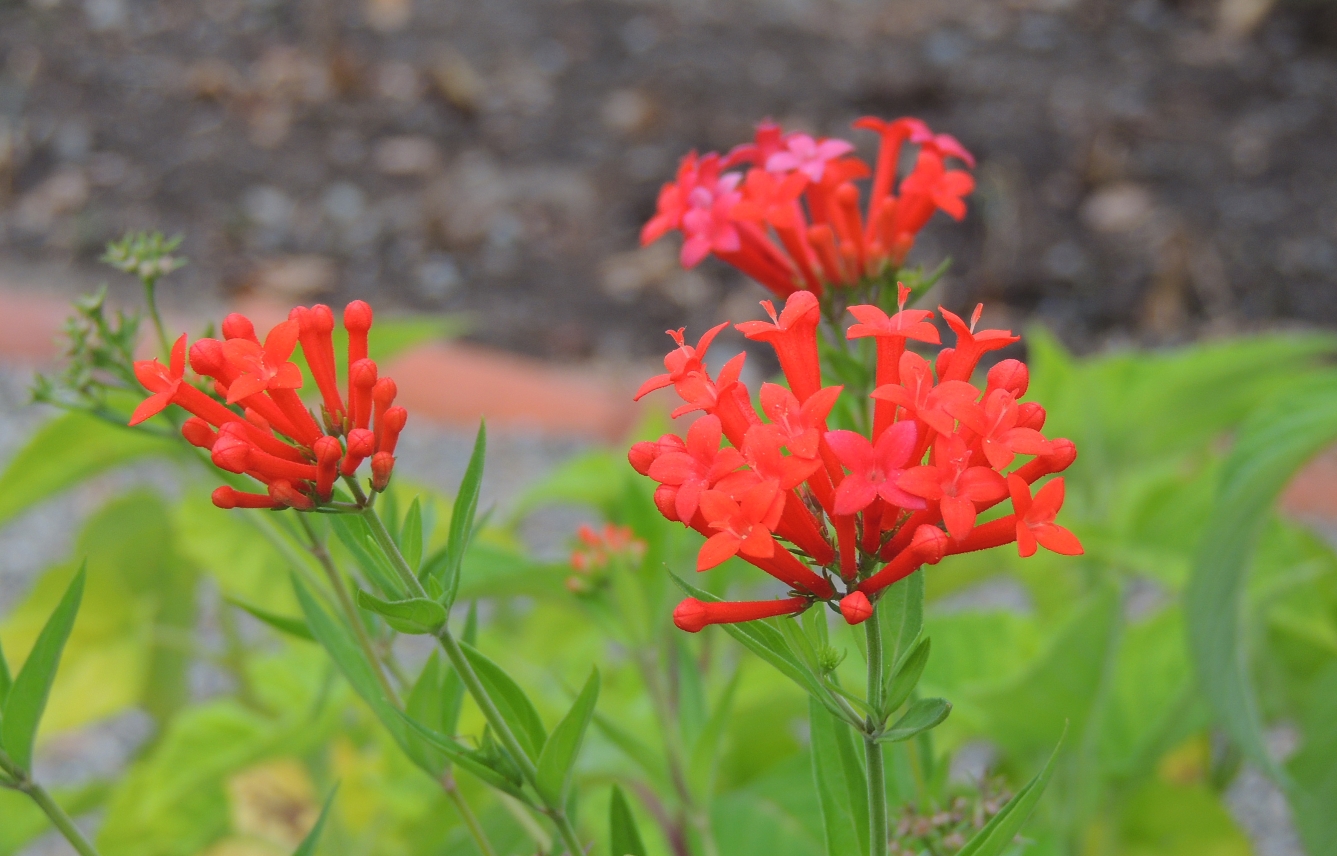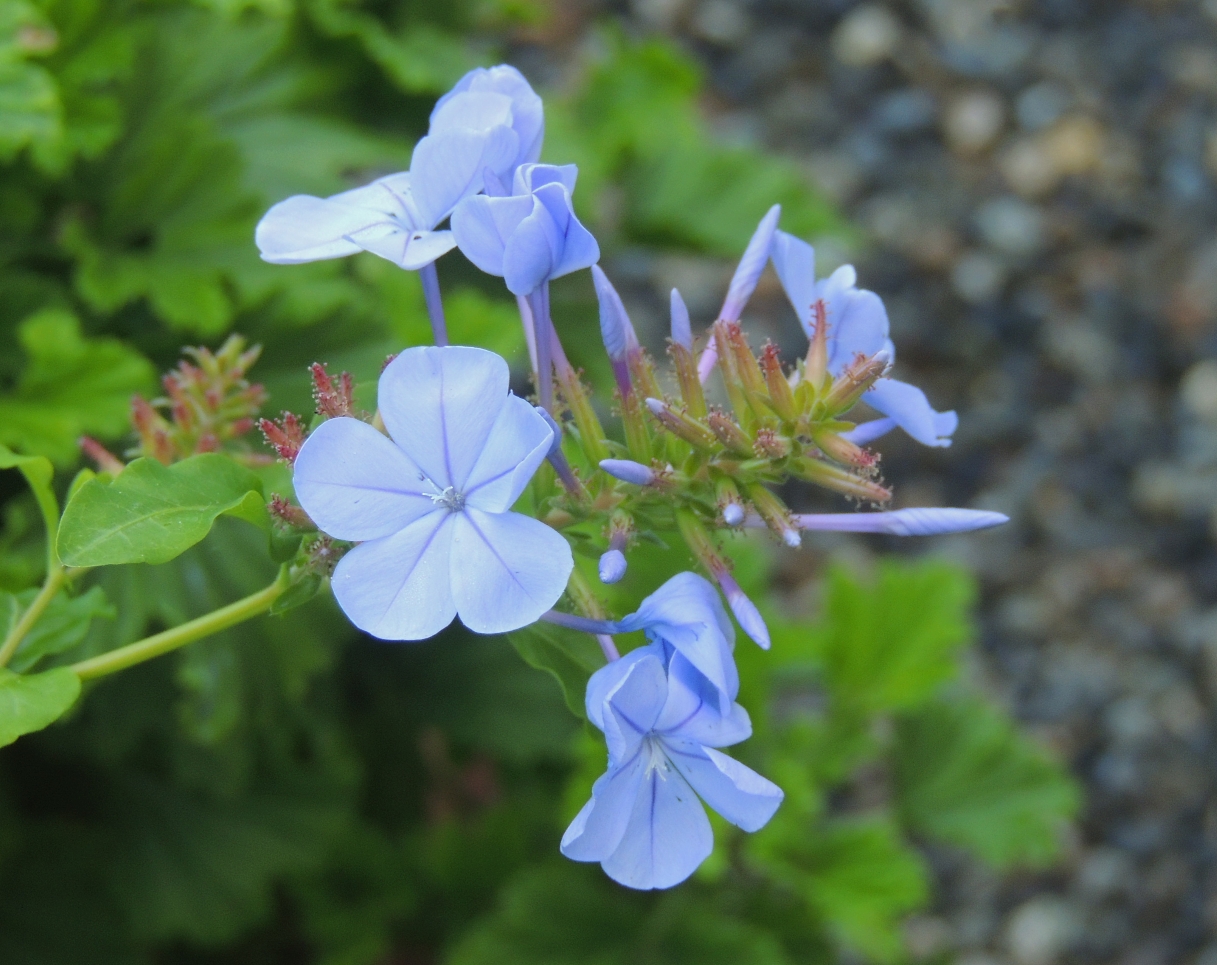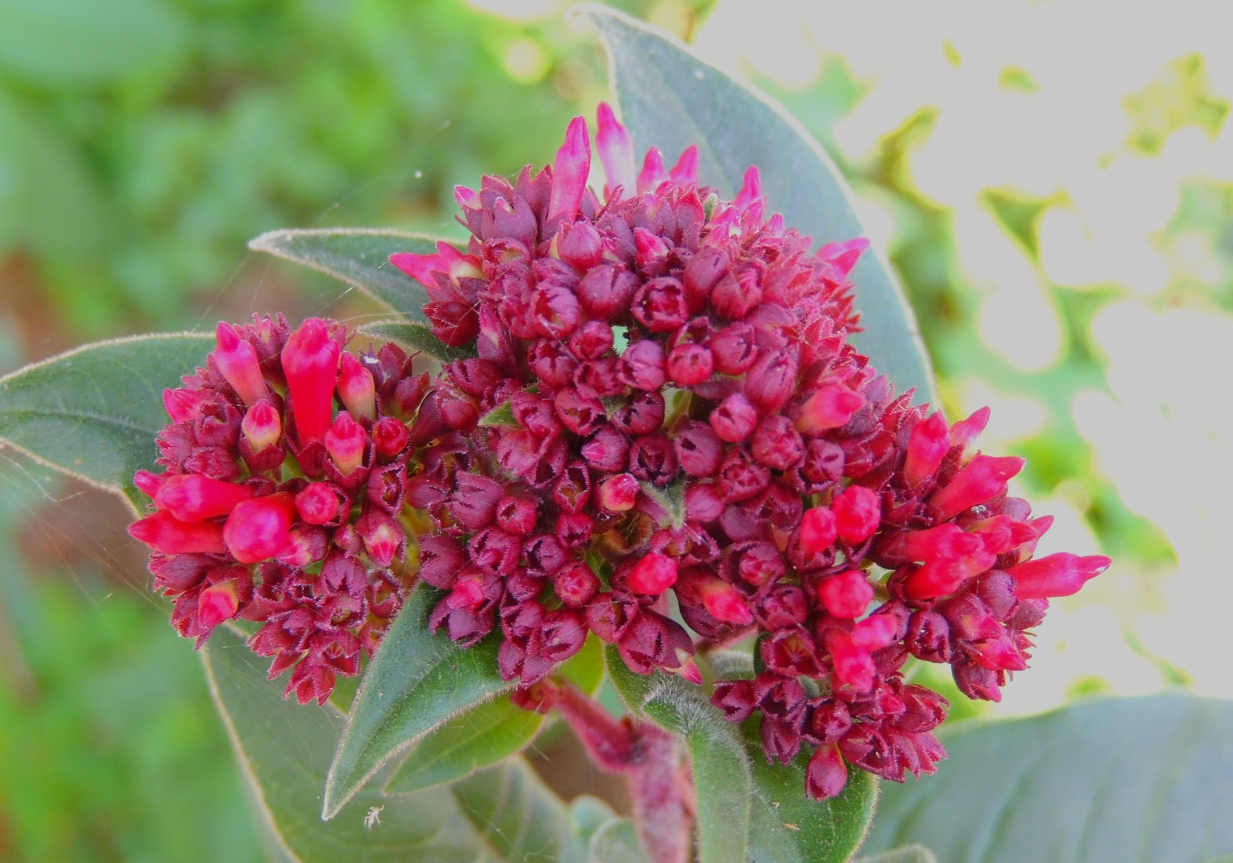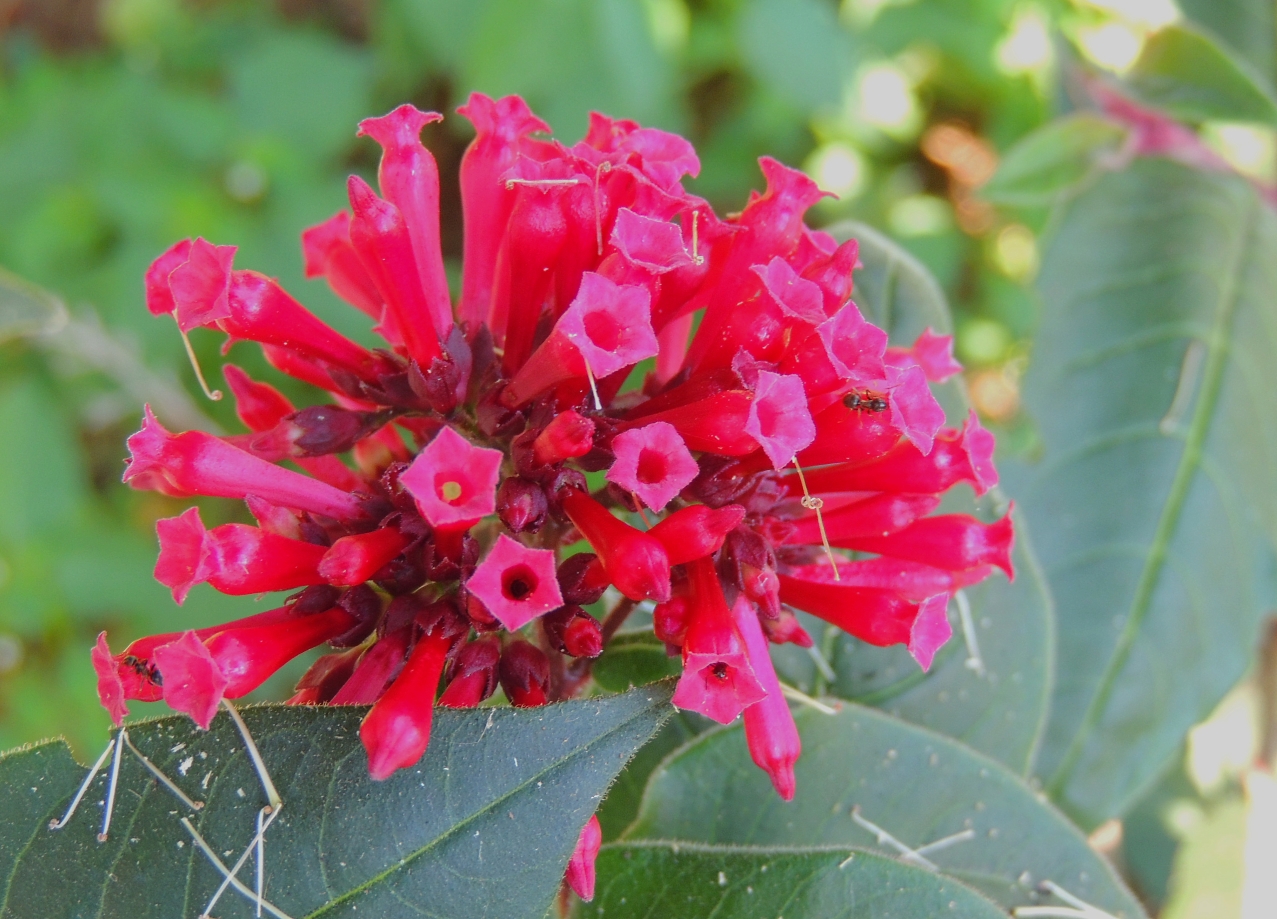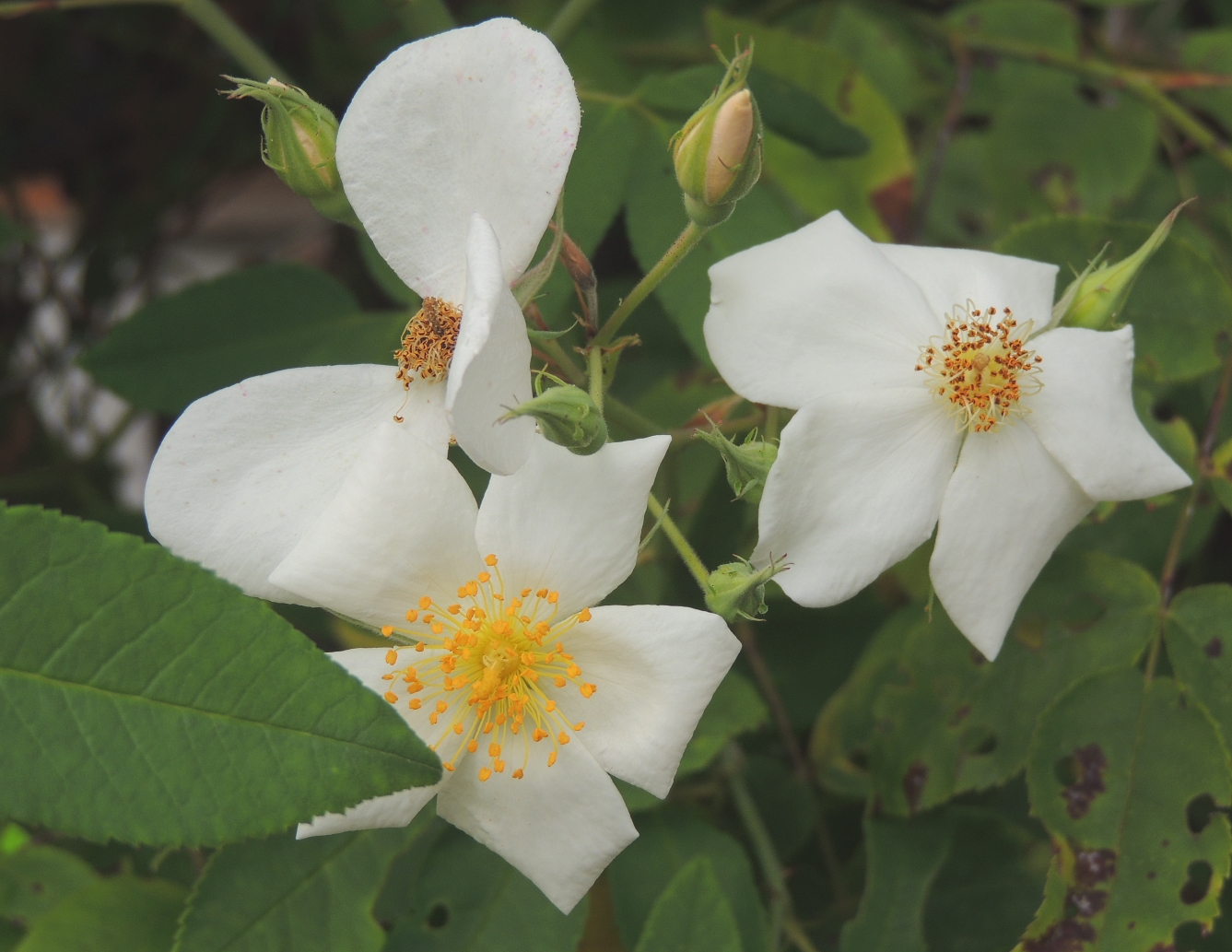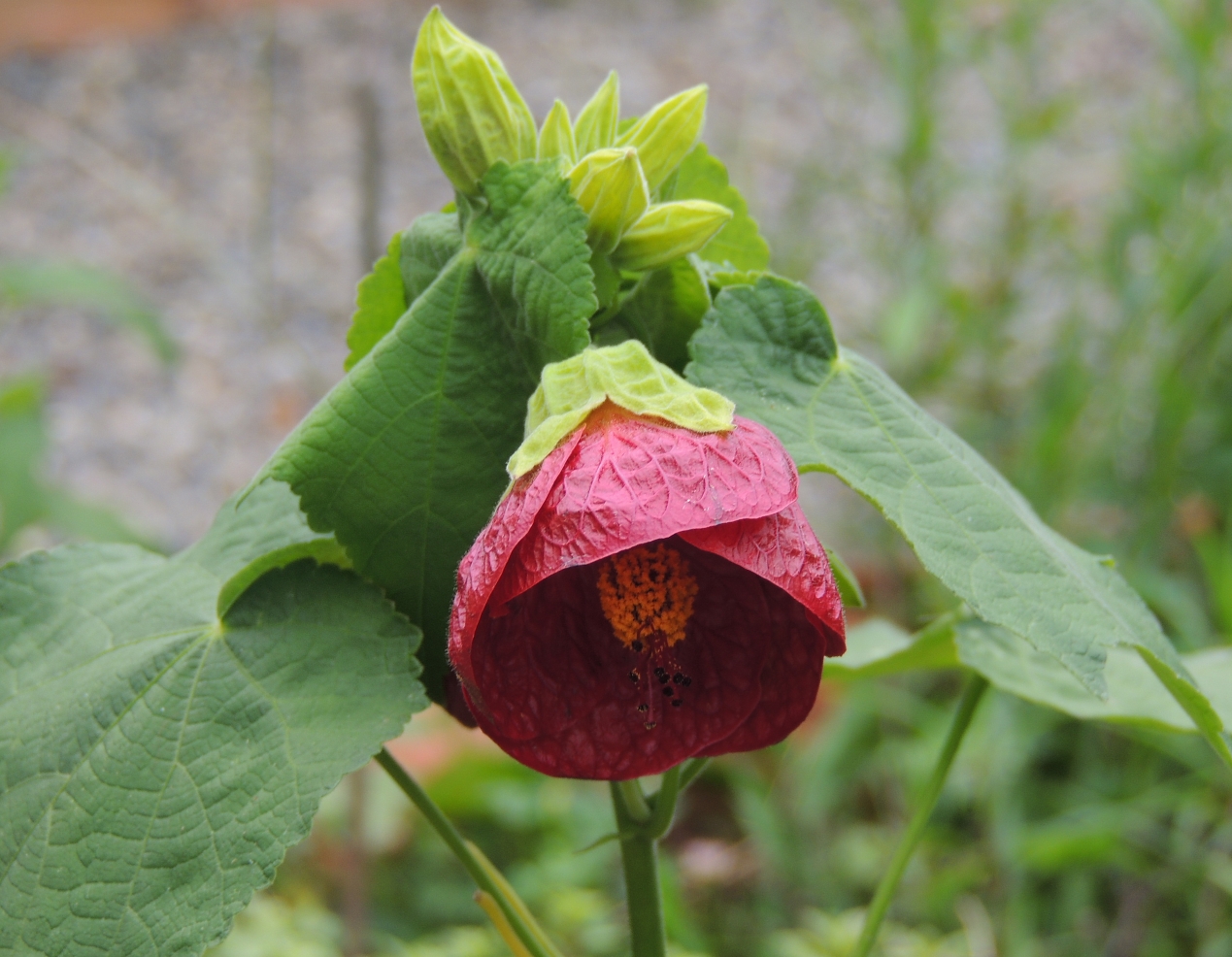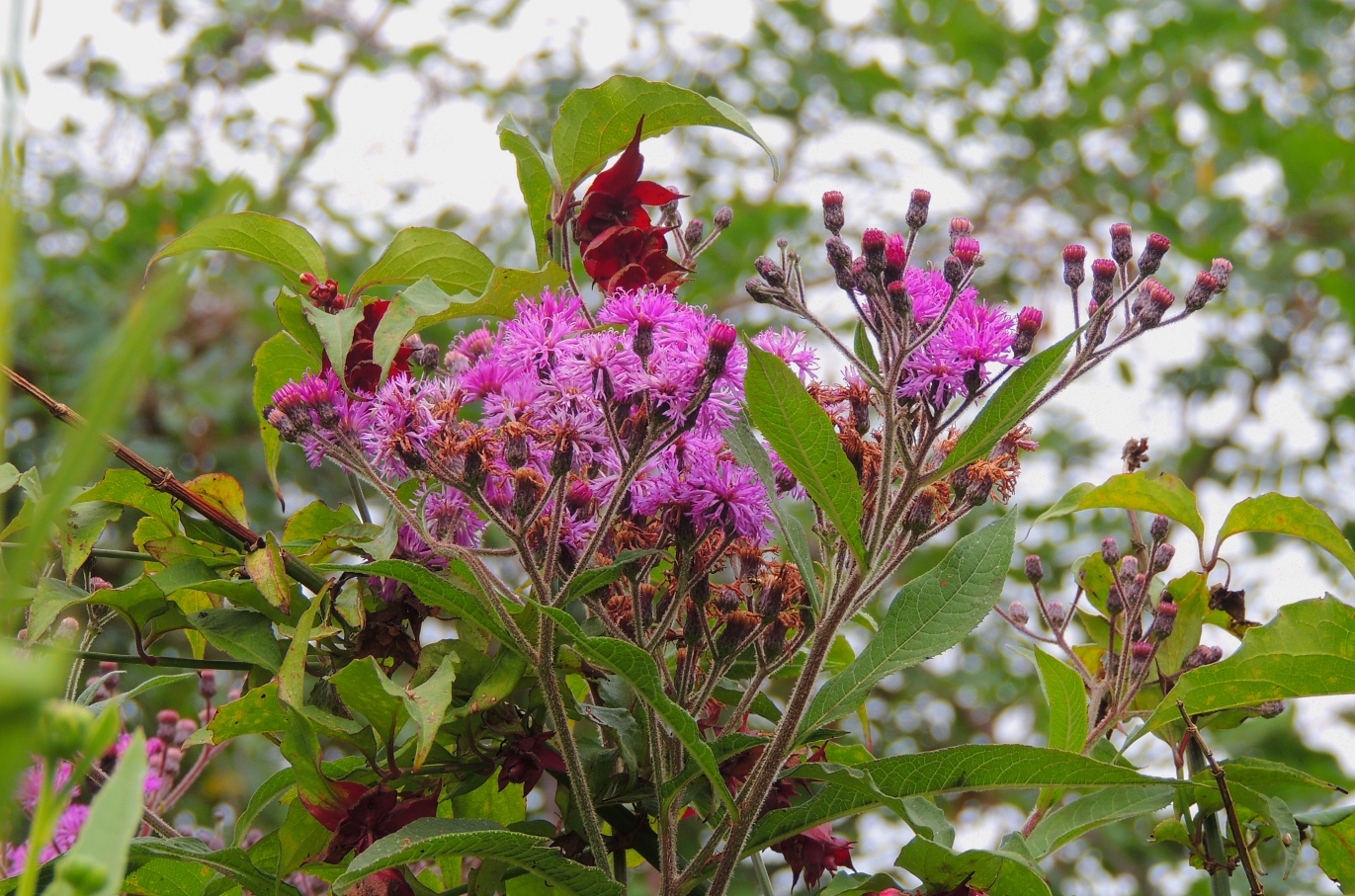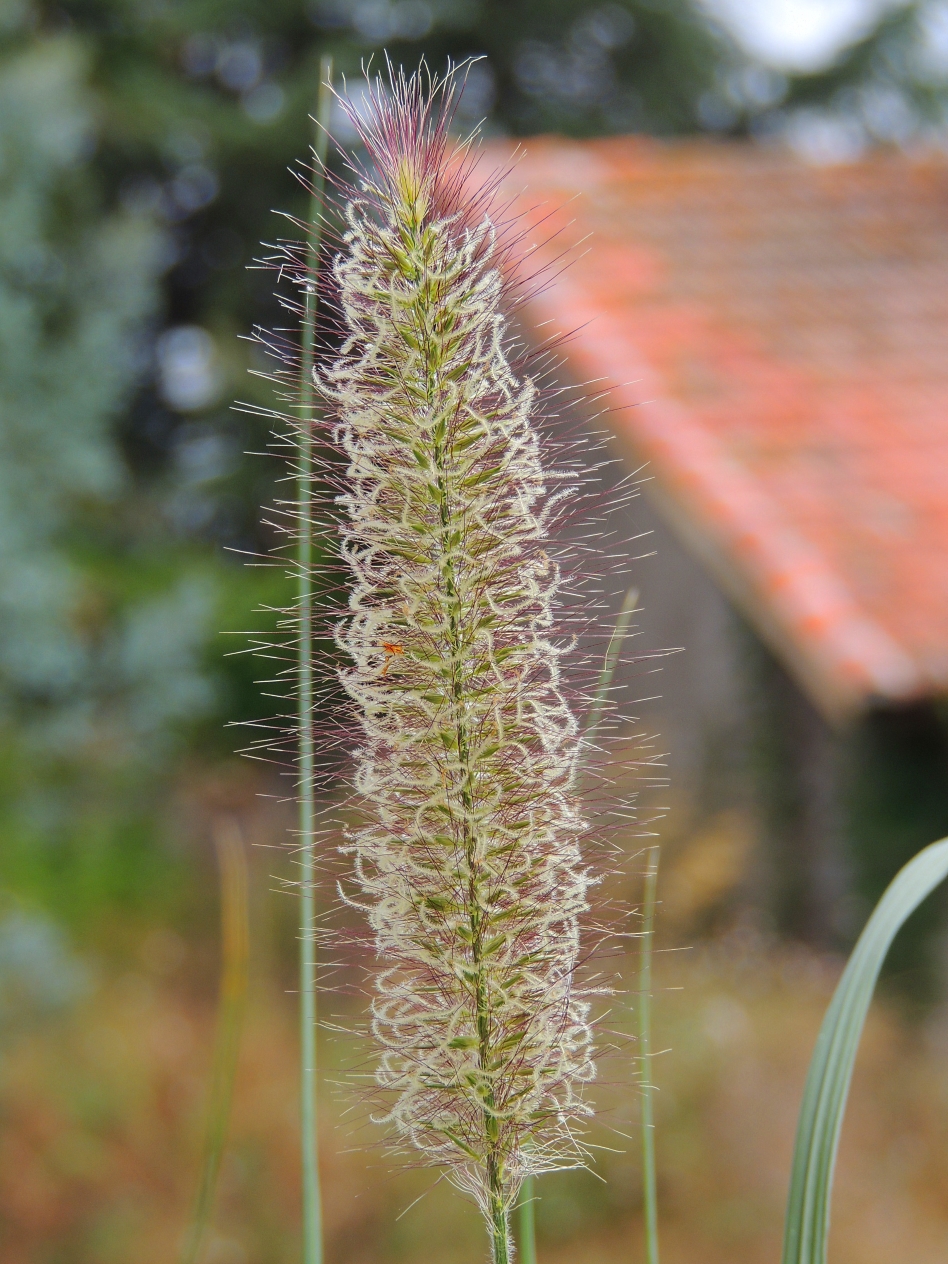
This fabulous yellow Grevillea has just erupted into flower, but as it was in a tree canopy some 20m high, it took a lot of pointing and squinting in the hot sun to even get this ‘artistically’ slightly fuzzy photo. Just a small group of these magnificent trees made a golden halo over our heads. From a distance, I thought it was a Callistemon, but the arching, almost horn-like flower structure confirmed it as a Grevillea. Maybe a Grevillea Robusta.
I have never experienced an extended period of acquaintance with a botanical category garden before. The chance to watch and wait as shrubs and trees emerge and bloom is really fabulous. Can you watch an overture? Not in musical terms, but you can in a garden. Although maybe calling Spring in Morocco an overture, probably the best season of all before the real heat and dry kicks in, is a real misnomer. But never mind, the general idea still works. Of course, in my own garden, the watching and waiting is precisely the great joy of it all, but in another space, where you have had no hand in making it, it is a real pleasure and surprise. And, as well, the surprise is really surprising! What follows is my inventory of surprise over the last week or so.

Here is another 20m high flowering wonder. To the casual eye, these immense plants, from a distance seemed almost banana-like. But hiding high in the canopy were these surreal white and blue flowerheads, which gave the game away as a Strelitzia of giant proportions. Running down a wide path close to the Jardin d’Andalus, they almost guarded the space. For those with a giant conservatory or greenhouse in the UK, Strelitzia augusta would be a show-stopper.

The Stelitzia more commonly known to gardeners is the Strelitzia regina, below. Growing to a good metre tall and wide in the warmth it needs, it is also the mascot flower for the city of Los Angeles, it is a striking and colourful plant. My mum adored them. And, in my favourite historical vein of finding the hidden women in horticulture, there is a significant connection between both these plants and the House of Hanover in the UK. Princess Augusta of Saxe-Gotha, mother of King George the Third, contributed to the enlarging of the smaller botanical garden at Kew, outside London, that her husband had developed to create a collection of tropical plants. The great Pagoda at Kew, still universally loved, was built as a present for Augusta in 1761.
Her son, King George the Third, married Charlotte of Mecklenburg-Strelitz in 1761, the same year that the Great Pagoda was built. She was, by all accounts, an accomplished botanist, and so the Strelitzia family of plants was named for her. I haven’t found a reference for the naming of Strelitzia augusta, but it isn’t a big leap to imagine that it was named for Princess Augusta, while the smaller, colourful plant is known to have been named for Queen Charlotte, Augusta’s daughter-in-law.
Kew Palace, a small royal palace inside Kew Gardens, was a favourite residence for Charlotte, and Queen Charlotte’s Cottage, at Kew, which Charlotte had built as a summer house, can still be visited today, as can Kew Palace itself.


Another high-flying flowerer caught my eye, and I was only able to identify it from a French inventory of unusual specimen plants in the garden which I fell over on the internet. Calodendron capense has huge flowering bunches of almost lily-like pink flowers and is very striking, but you won’t see it if you’re not looking up. In amongst other trees, it grows slender and very tall, and flowering happens at the top of the canopy. I only spotted one tree in the garden.


Here is a plant which I do know. My own Cestrum elegans is still in recovery mode after a severe pruning last Autumn. It got completely stripped by some beastie and being at the back of the Barn Garden, I didn’t spot it till it was down to bare twigs. So desperate measures meant digging it up, no vine weevils fortunately and potting it up in the hospital ward. This Spring , so far, it looks much better and has produced good, sturdy growth, but no flowers, never mind. It was a bit of a stunner in better days, and so let’s see what next year brings.

This is probably it’s first cousin, Cestrum purpureum with a mauve flower bunch. In the UK, what is called Cestrum Purpureum by many nurseries, is the same lipstick pink as my Elegans, so I have chosen a different link for this plant seen in Morocco. It is less knockout in terms of colour, but very sweet all the same. It wasn’t looking altogether happy in Rabat, I suspect it needs quite a bit more water than it will ever get in Morocco. Dryness might have been a factor for mine too, as that feeds weakness and then the bugs move in.

This closeup below, does show this Portea alatisepala off as a Hammer Horror extra, but when the purple buds break, it looks rather wonderful. Insects love it, as you can see, but it rather too closely resembles a bleeding stump of a hand to me right now.

It’s a shame this plant, Strophanthus speciosus, is entirely poisonous top to toe. Who wouldn’t love this crazy spidery flower growing up and down a pergola? Ah well.


I think this kind of speckled light is the best way to see Aloes of any kind. The spikes, the new growth, everything is illuminated rather than flattened. And here, they reach for the sky.

Lots of the women gardener workers have been busy harvesting these little fruits in the garden, and you can buy them in the souk. I have never knowingly eaten a mulberry, but had always assumed they were a very dark fruit. These taste subtly sweet, as I found when a gardener offered me one to taste. The tree is statuesque, which you can’t see unless it is on it’s own in a big space, as below.

And a store for the future…

